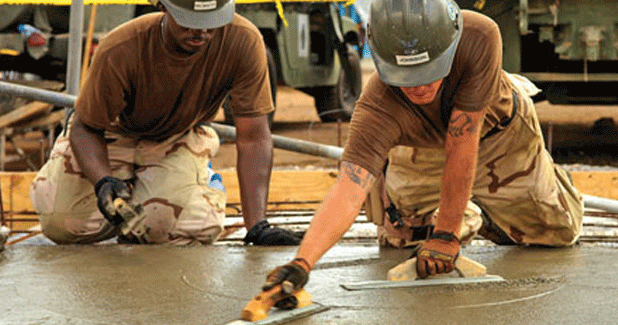While the Indian construction sector has moved from the bullock cart to the bullet train era, skilled workers remain an elusive commodity, writes Niranjan Hiranandani.
As construction and other infrastructure building activities in the country flourish, there is a growing need to mobilise and train individuals to fulfil the need for skilled manpower. Ensuring a steady pool of qualified, globally competitive and job-ready workforce for the construction industry will not only ensure high-quality output but lead to higher employment generation in urban, semi-urban and rural areas, consequently having a multiplier effect on the country´s GDP growth.
The opportunity
India has 11 million students currently pursuing higher education, which represents only 11 per cent of the age group from 17-23, which is expected to rise to 21 per cent by 2017. The country is emerging as a human capital and knowledge-driven economy on the world map. Therefore, the government must urgently address the inadequacies in the vocational education domain.
The value of the construction sector with respect to India´s economy has never been more significant. The real-estate sector - residential, commercial, SEZ and corporate - is growing at a significant rate of about 10-15 per cent per annum. The GDP contribution of the construction sector is estimated to grow at a CAGR of 9.5-10 per cent till 2022 in real terms. This bodes well for the many millions who can find employment opportunities in this sector. If all goes well, the overall employment in the industry could grow from 36 million to over 83 million by 2022.
Investments in the real-estate sector also have a positive and multiplier impact on allied industries. According to statistics, 78 per cent of the sum spent on the construction of a housing unit in India gets added back directly to India´s GDP. Thus, industries such as cement, steel, sand, timber, architecture and interior design and financing institutions also benefit. However, these are more skill-driven.
The stumbling block
The hitch is that productivity in this sector is diminishing, owing to low labour quality and skills that need to be upgraded for millions of workers.
Going forward, the Construction Skill Development Council needs to devise industry-based curriculum, set training standards, offer vocational training and provide industry-based certification. Acknowledging the skill deficit in the country, Prime Minister Narendra Modi has created a ministry to undertake the agenda of skill development and entrepreneurship. Sarbananda Sonowal has been appointed Minister of State for Skill Development and Entrepreneurship, with the government pledging its intent and purpose on a variety of issues.
The way ahead
Major objectives include strategically developing high-impact domains like labour-intensive manufacturing, strengthening the traditional employment bases of agriculture and allied industries and retail through modernisation and stronger credit and market linkages; harnessing the opportunities provided by the upgrade of infrastructure and housing; encouraging and empowering our youth for self-employment; incubating entrepreneurship as well as facilitating credit; and addressing the employability issue by initiating a multi-skill development programme. The focus: Perennial job creation and entrepreneurship, in both rural and urban areas. Other areas involve transforming our employment exchanges into career centres - connecting our youth with job opportunities in a transparent and effective manner through the use of technology, as well as providing counselling and training, and construction skill development. In fact, a concerted thrust on construction skill development (skilled or semi-skilled and unskilled) would lead to 25 million new jobs. And with the imminent doubling of the urban population from 28 crore (2001) to 56 crore (2030), it is proposed to initiate 100 smart integrated cities with the latest technology and infrastructure.
The imperative
Although the construction industry employs 36 million people, second only to the agricultural sector, the incremental workforce requirement is around 4 million people per year over the next seven years to sustain the current growth rate. Evidently, the construction industry is set to face challenges in terms of sourcing skilled manpower. The bulk of workforce at around 82.5 per cent comprises unskilled labour. Strategic investment in human capital and advancement in quality can be regarded as the key to building a knowledge economy. India needs to revamp its skill development strategies with a focus on industry needs and attempt to balance labour demand and supply. Skill development will, no doubt, act as a dynamic vehicle to accelerate productivity and entrepreneurship.
About the Author:
Niranjan Hiranandani,Managing Director, Hiranandani Group of Companies, deciphered a vision of creating better communities by delivering benchmark projects epitomised by the innate character of his company. He is also actively associated with and holds key positions in various government bodies, private and social institutions and schools and colleges.




















